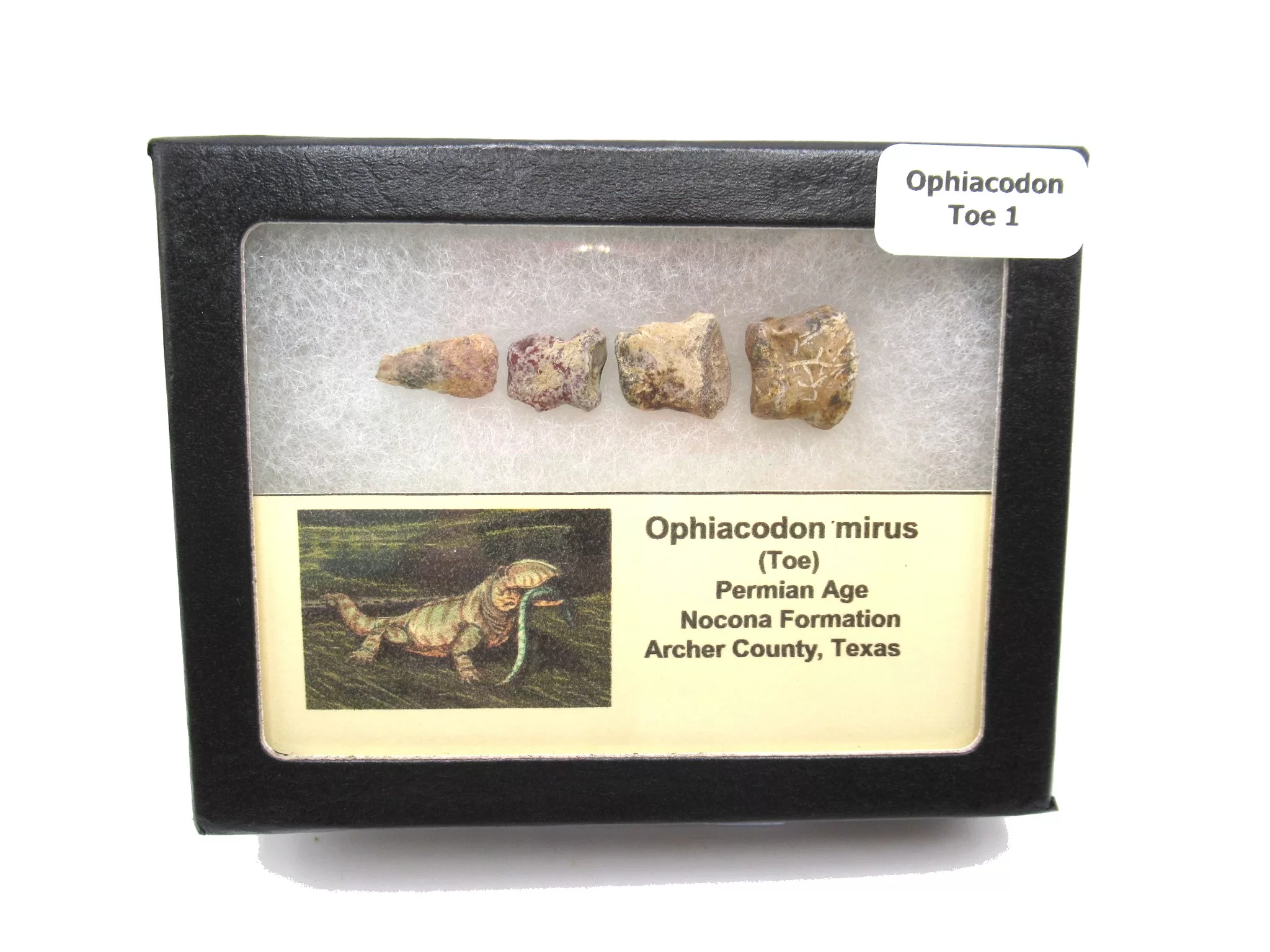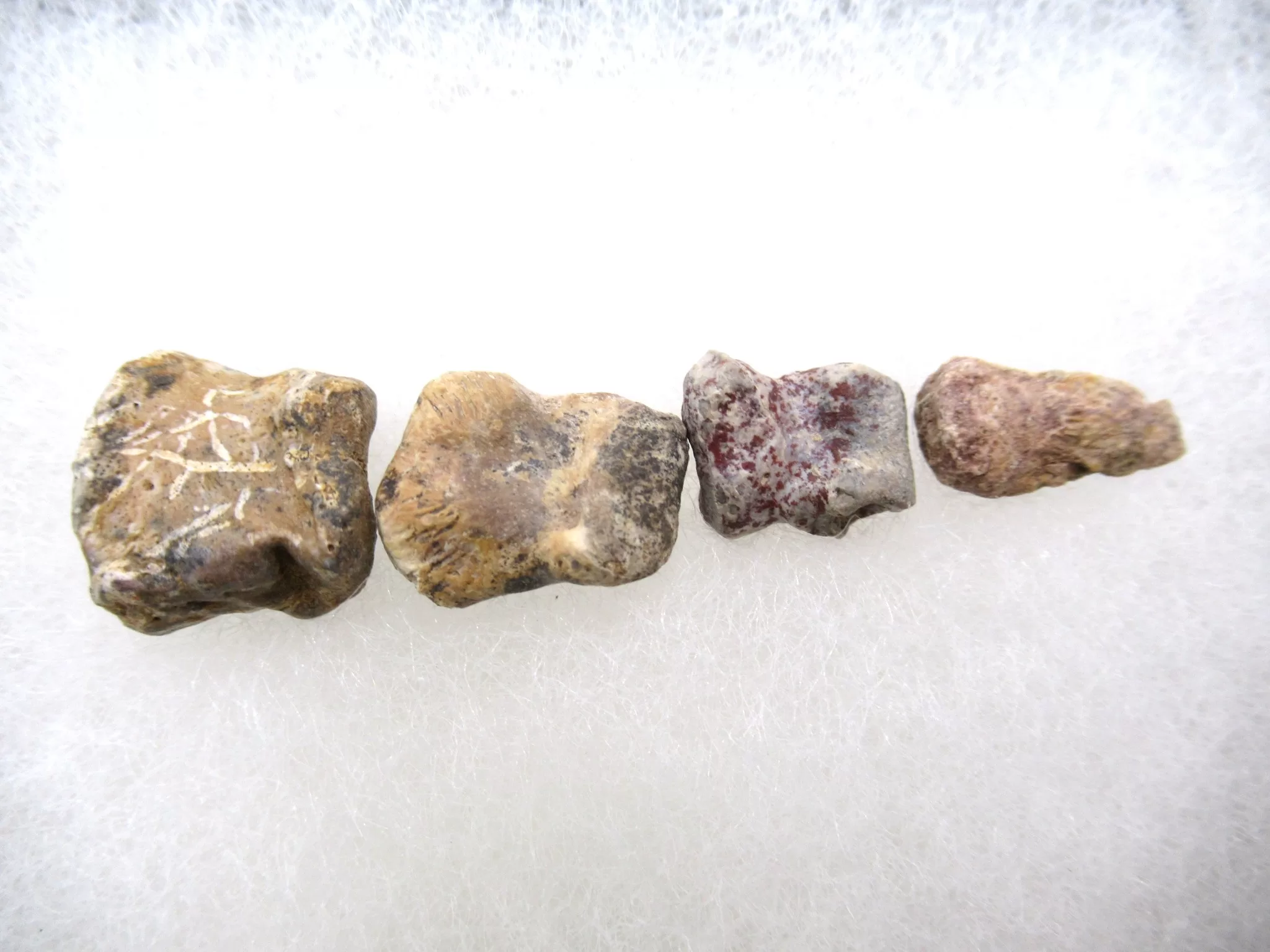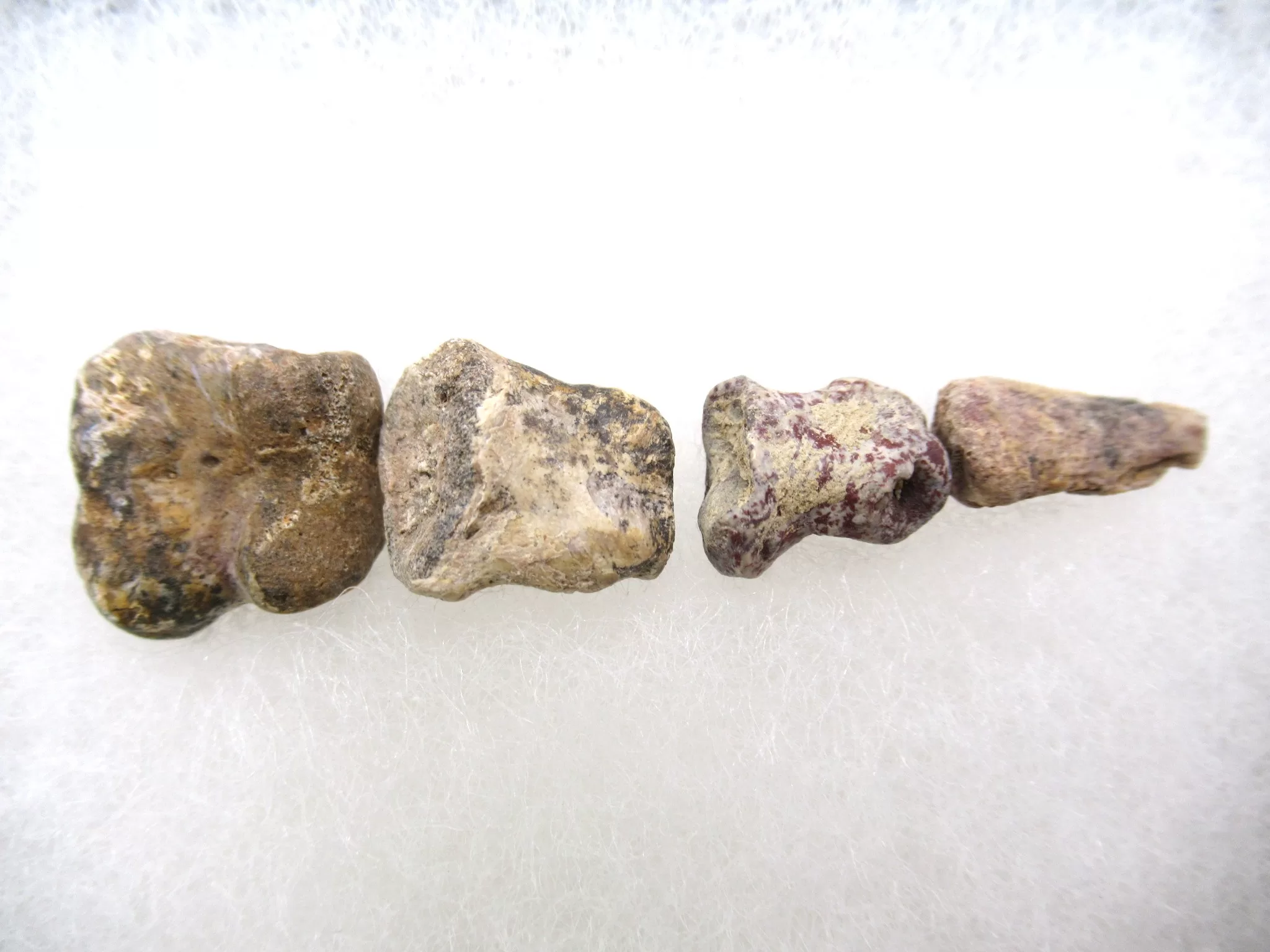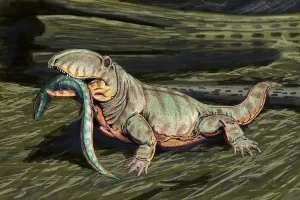Description
Ophiacodon mirus
- Ophiacodon mirus
- Permian Age
- Nocona Formation
- Archer County, Texas
- This Toe measures 2.21″ long and will come in a 3.25″ x 4.25″ Riker Mount with Label as Shown. The bones were all collected from the same formation and assembled. The CLAW is of above average quality
- MORE Synapsid Fossils for Sale
Ophiacodon (meaning “snake tooth”) is an extinct genus of synapsids belonging to the family Ophiacodontidae. They lived from the Late Carboniferous to the Early Permian in North America and possibly Europe. The genus was named along with its type species O. mirus by paleontologist Othniel Charles Marsh in 1878. It currently includes five other species. As an ophiacodontid, Ophiacodon is one of the most basal synapsids and is close to the evolutionary line leading to mammals.
Ophiacodon has a large skull with a deep snout. It has the longest skull of any early synapsid, reaching up to 50 centimetres (20 in) in one specimen. The jaws are lined with many small teeth. It was larger than most other tetrapods (four-limbed vertebrates) of its time, ranging from 1.6 to 3 metres (5.2 to 9.8 ft) in length and 26 to 230 kilograms (57 to 507 lb) in weight.








